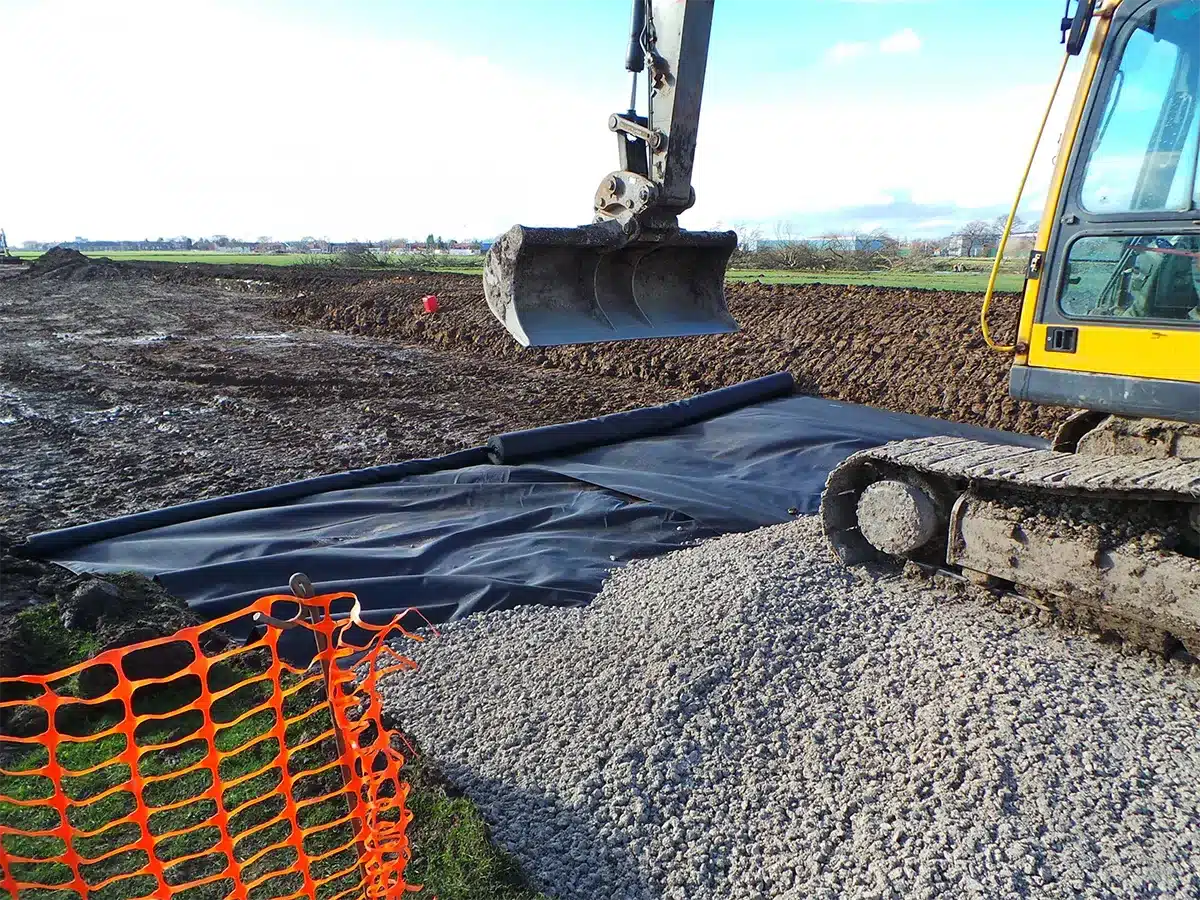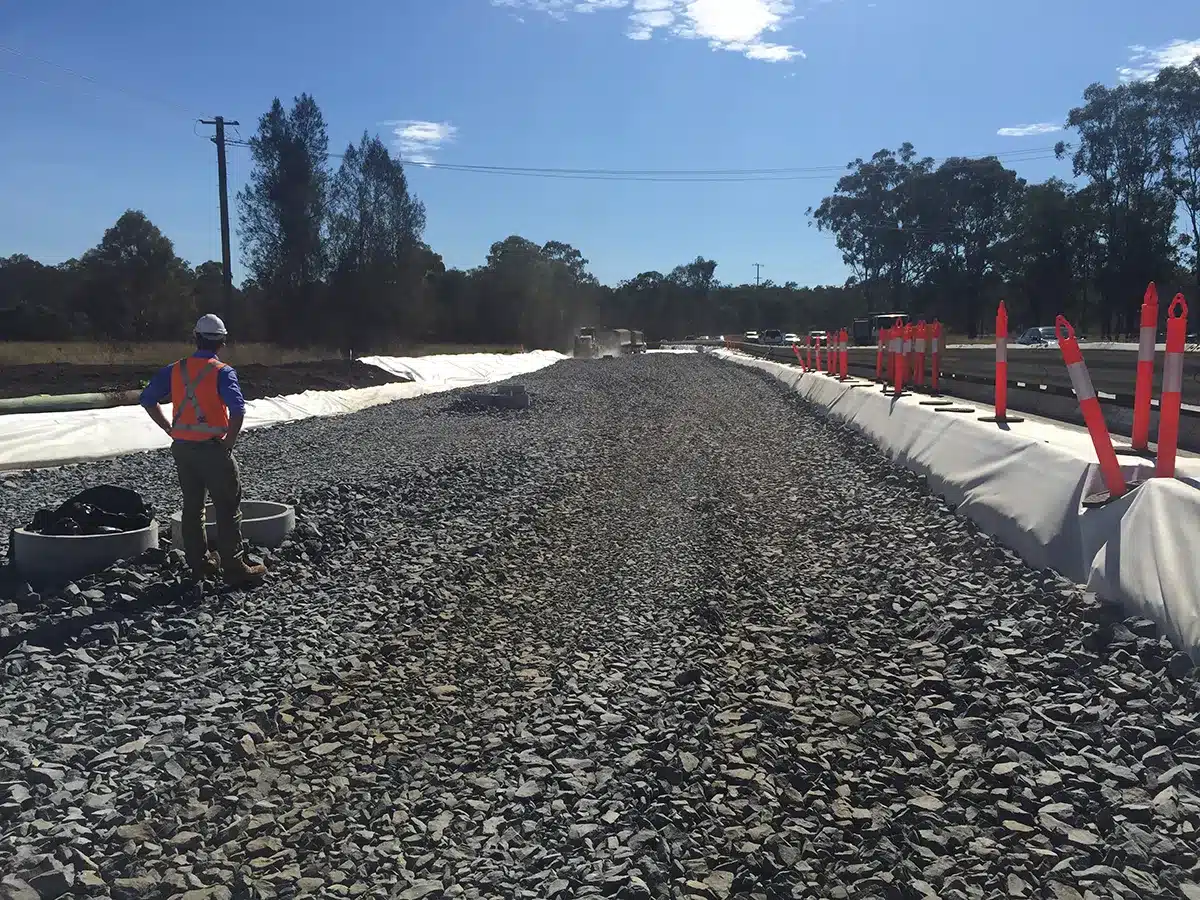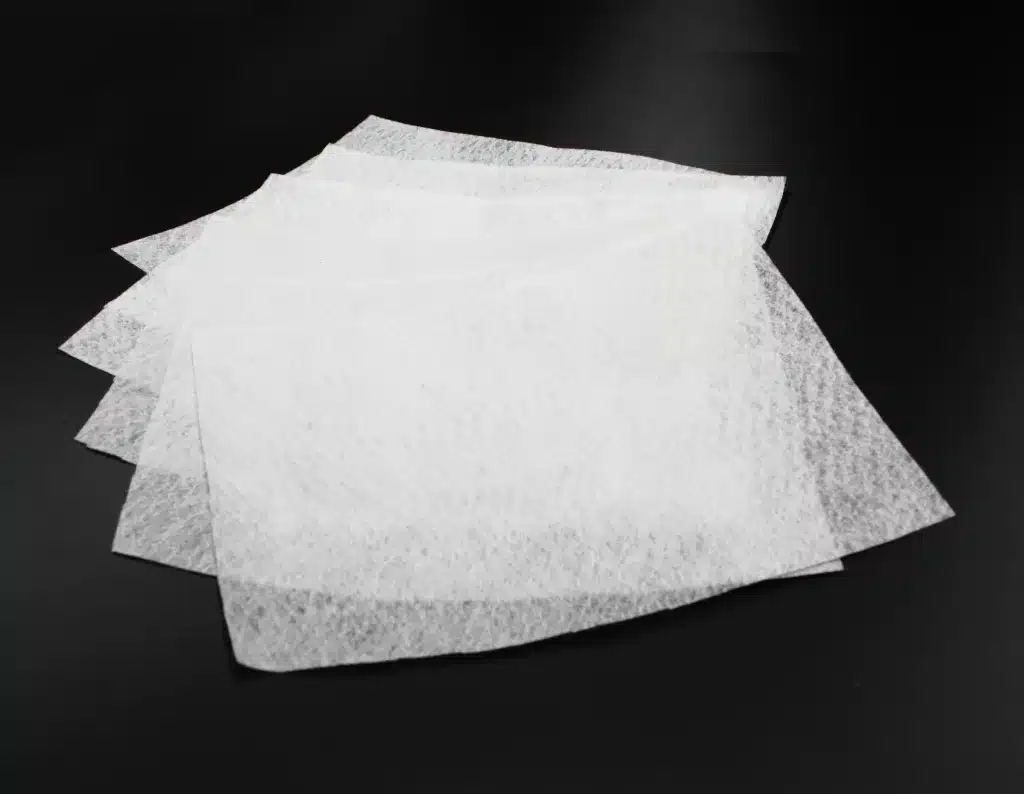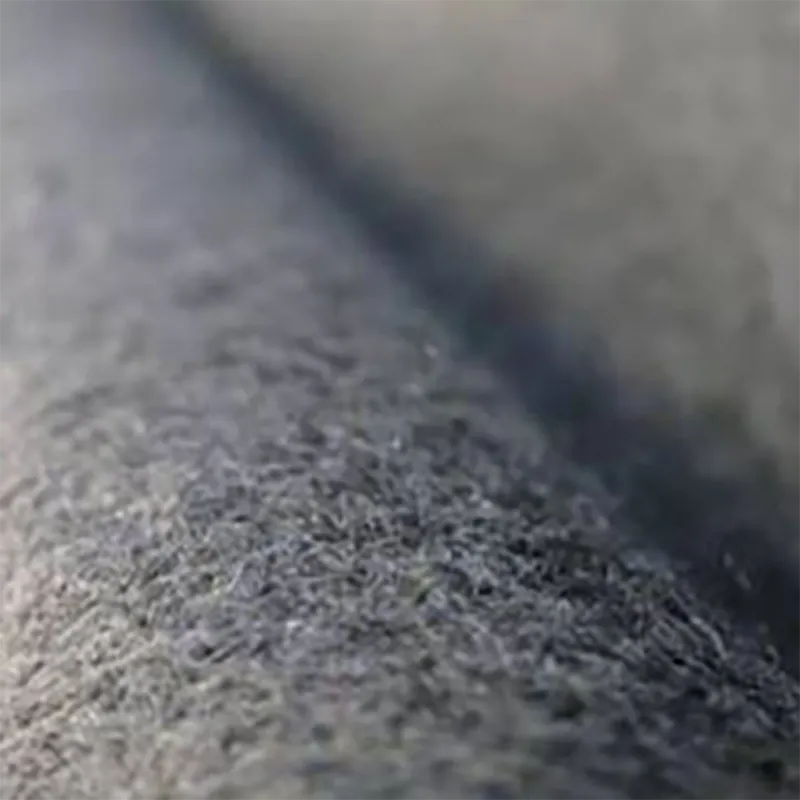+86-159 9860 6917
info@geofantex.com
geofantex@gmail.com
+86-400-8266163-44899
Geotextiles emerge as unsung heroes, reinforcing soil, aiding in erosion control, and enhancing durability. However, the core of their effectiveness lies in an attribute not visible to the naked eye: tensile strength. This article delves into the intricacies of tensile testing for geotextiles, a critical procedure that determines their capability to withstand tension.

What Is the Tensile Test for Geotextiles?
The tensile test is a critical evaluation used to determine a geotextile’s ability to withstand stretching forces, which directly impacts its performance in soil stabilization, erosion control, filtration, and drainage applications. Key points include:
- Sample Preparation: Geotextile samples are cut to standardized dimensions (ASTM D4595 or ISO 10319) and conditioned under controlled temperature and humidity to ensure consistent testing conditions.
- Testing Process: The sample is mounted on a tensile testing machine, which applies a steadily increasing load until the material breaks. This records tensile strength, elongation at break, and generates stress-strain curves.
- Physical Tests: Additional evaluations include puncture resistance (ASTM D4833), burst strength (ASTM D3786), and tear resistance (ASTM D4533) to measure durability under mechanical stresses.
- Hydraulic Tests: Geotextile water flow properties are assessed through permittivity (ASTM D4491) and transmissivity (ASTM D4716) tests, ensuring proper filtration and drainage.
Tensile testing provides engineers with vital data on strength, ductility, and elasticity, enabling informed material selection and guaranteeing long-term reliability in civil engineering and construction projects.
How do you test geotextile?
- Geotextile testing is performed to verify material quality, durability, and performance for civil engineering applications, covering both mechanical and hydraulic properties.
- Physical testing includes tensile strength testing (ASTM D4595 or ISO 10319) to evaluate resistance to stretching and elongation, puncture resistance testing (ASTM D4833) to assess penetration resistance from aggregates, burst strength testing (ASTM D3786) to measure multidirectional pressure resistance, and tear resistance testing (ASTM D4533) to determine resistance to crack propagation.
- Hydraulic testing focuses on permittivity testing (ASTM D4491) to measure water flow perpendicular to the geotextile and transmissivity testing (ASTM D4716) to evaluate in-plane water flow capacity under load.
- Durability testing, when required, includes UV resistance and chemical exposure assessments to ensure long-term performance in harsh environmental conditions.
This combination of tests ensures geotextiles meet design requirements for soil stabilization, filtration, drainage, erosion control, and long-term structural reliability.

How do you measure the tensile strength of fiber?
Measuring fiber tensile strength focuses on evaluating the performance of individual fibers, which form the basis of geotextile materials. The process involves:
- Sample Preparation: Fibers are carefully cut to standardized lengths and conditioned under controlled temperature and humidity to ensure consistent results.
- Testing Equipment: A micro tensile testing machine or a universal testing machine equipped with precise grips and load cells is used to handle small-scale specimens.
- Alignment and Clamping: The fiber is carefully aligned and clamped at both ends to prevent slippage or bending during testing.
- Applying Tensile Load: A gradually increasing force is applied until the fiber fails, simulating the tension the material may experience in real-world applications.
Fiber tensile testing reveals the intrinsic strength of the material, providing essential data for designing reliable and durable geotextiles used in soil stabilization, erosion control, and civil engineering applications.
What is the tensile testing method?
- Definition: The tensile testing method is a fundamental mechanical test used to determine how a material behaves under controlled tension until it breaks.
- Purpose: It measures the tensile strength, yield strength, elongation, ductility, and elasticity of the material, offering critical insight into its performance under stress.
- Type of test: It is considered a destructive test, as the sample is stretched until failure to evaluate its ultimate strength and deformation capacity.
- Equipment: Conducted using a tensile testing machine, which applies a steadily increasing load while recording force and elongation data throughout the process.
- Testing procedure: The sample—whether a geotextile strip, polymer film, or fiber—is gripped at both ends and subjected to axial tension until rupture occurs.
Tensile testing for geotextiles offers a window into the material’s soul, revealing its strength and flexibility under stress. This testing is not just a procedure but a cornerstone in the selection and application of geotextiles in projects that shape our world. By understanding how to test geotextile, measure the tensile strength of fibers, and comprehend the tensile testing method, we gain insights into the material’s performance, ensuring the longevity and durability of construction projects. As we continue to push the boundaries of engineering and construction, the role of tensile testing in assessing and optimizing material performance remains invaluable.



Get Free Sample
We’ll respond as soon as possible(within 12 hours)






















